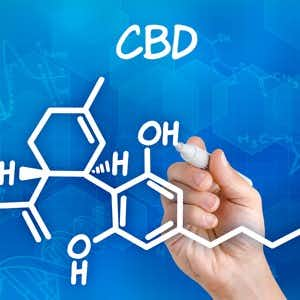
After thousands of years of medicinal use, we now have irrefutable evidence that cannabis works to control epilepsy. The most prestigious medical journal in the world, The New England Journal of Medicine (May 25, 2017), has just published a study demonstrating the effectiveness of cannabidiol against epilepsy.
Medical Marijuana: The Back Story:
Orrin Devinsky, MD, was the lead author of the study. He is a neurologist and epilepsy expert. He directs the Comprehensive Epilepsy Center at the NYU Langone Comprehensive Epilepsy-Sleep Institute. In a previous article (New England Journal of Medicine, Sept. 10, 2015), he pointed out that, even with all our modern drugs, 30% of people with epilepsy continue to have seizures.
In that article he notes that:
“Cannabis has been used medicinally for millennia and was used in the treatment of epilepsy as early as 1800 B.C.E. in Sumeria. Victorian-era neurologists used Indian hemp to treat epilepsy and reported dramatic success.”
Modern medicine has been reluctant to test medical marijuana. For one thing, there has been little, if any, funding. Then there are all the cultural taboos. Researchers are generally a conservative group. They often fear being chastised, or worse, being laughed at by their colleagues. Studying the health benefits of marijuana compounds has been a third rail for many investigators.
Dr. Devinsky is so respected, however, that he seemingly had no fear tackling this thorny problem. As he pointed out in his NEJM paper back in 2015, “More than 545 distinct compounds have been isolated from cannabis species.” He went on to describe cannabidiol (CBD) as a “nonpsychoactive cannabinoid.” In other words, it doesn’t make people high the way THC (tetrahydrocannabinol) does.
Cannabidiol “alters neuronal excitability” according to Dr. Devinsky. In addition to the ancient Sumerians and Victorian-era neurologists, there have been many modern-day case reports of success with both THC and cannabidiol. But such anecdotes do not convince most physicians. That is why Dr. Devinsky’s scientific study is so compelling.
What Devinsky and Colleagues Did:
METHODS:
“In this double-blind, placebo-controlled trial, we randomly assigned 120 children and young adults with the Dravet syndrome and drug-resistant seizures to receive either cannabidiol oral solution at a dose of 20 mg per kilogram of body weight per day or placebo, in addition to standard antiepileptic treatment. The primary end point was the change in convulsive-seizure frequency over a 14-week treatment period, as compared with a 4-week baseline period.”
Dravet syndrome is a “catastrophic” hard-to-treat kind of epilepsy that starts in childhood. It is manifested by different kinds of seizures and can lead to behavioral problems, developmental delays, language difficulties and a variety of other neurological issues. There are no FDA-approved drugs for Dravet syndrome.
The study results were clear:
“The percentage of patients who had at least a 50% reduction in convulsive- seizure frequency was 43% with cannabidiol and 27% with placebo.”
Although not a huge number, 5% of the patients became seizure free on cannabidiol. None of the patients on placebo became seizure free.
Side Effects of Cannabidiol:
Dr. Devinsky and his colleagues noted that cannabidiol caused “somnolence” in 36% of the cannabidiol group compared to 10% in the placebo group. That means the children were sleepy and lethargic. Other adverse reactions included vomiting, upper respiratory tract infections, reduced appetite and diarrhea.
The Future of Marijuana Research:
Perhaps this study, published in such a prestigious medical journal, will stimulate other investigators to explore the therapeutic benefits of cannabis. There are already numerous reports that compounds in marijuana may help ease nerve (neuropathic) pain.
To learn more about medical marijuana, you may wish to listen to our free one-hour radio interview with David Casarett, MD.
We think this radio show will provide you a balanced perspective on this controversial topic. It is free. You can listen to the streaming audio by clicking on the green arrow inside the black circle above the photo of Dr. Casarett. You can also download the mp3 version to your computer or smart phone for free and listen at your leisure.
Let us know your thoughts about medical marijuana in the comment section below.

